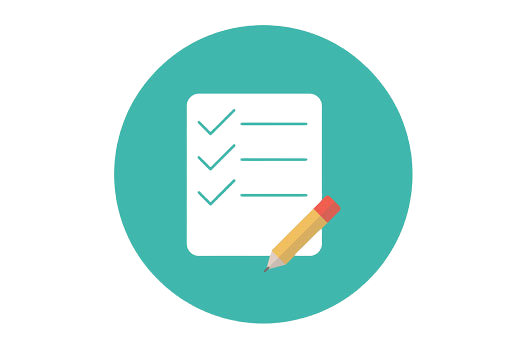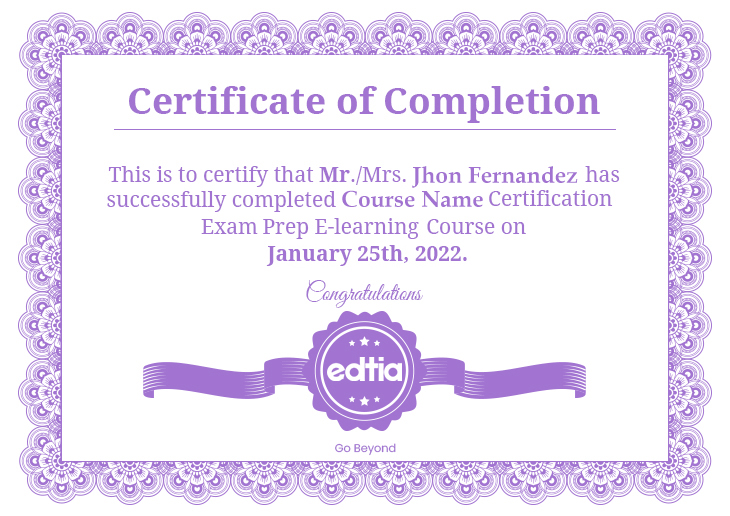Your Shopping Cart

Enroll now to become a Certified Cloud Architect expert with EDTIA Cloud Architect Masters Program and upgrade your skills.
Cloud Architect Masters Program makes you proficient in designing, planning, and scaling cloud implementation. It contains training in Python, Cloud Computing, AWS Architectural Principles, Migrating Applications on Cloud, and DevOps.
Cloud Architects help organizations to leverage Google Cloud technologies. With a thorough knowledge of cloud architecture and Google Cloud, they design, develop, and manage robust, secure, scalable, highly available, and dynamic solutions to drive business objectives.
Our Cloud Architect Course Learning track has been curated after thorough research and recommendations from industry experts. It will help you differentiate yourself with multi-platform fluency and have real-world experience with the essential tools and platforms.
There are no prerequisites for enrollment in the Cloud Computing Course Masters Program.
Experienced professional working in the IT industry. An aspirant is planning to enter the data-driven world of analytics.
Cloud architects are IT experts responsible for supervising the cloud computing infrastructure. This involves working on cloud application designs, leading teams, developing and implementing cloud strategies, and ensuring that cloud systems stay up to date and run smoothly.
The cloud architect is accountable for creating and executing cloud computing solutions. This includes initiating the cloud infrastructure, designing the cloud application architecture, and designing the cloud security architecture.
The demand for cloud engineers is relatively high. The cloud market is expanding and is expected to grow by 26% by the end of 2022.
A cloud engineer is an IT professional answerable for any technological duties associated with cloud computing, including creation, planning, management, maintenance, and support. Cloud engineer is a general term containing a few other roles, including cloud architect.
Learn what Python is and touch on the basics.
Learn different types of sequence structures, related operations and their usage, and diverse ways of opening, reading, and writing to files.
Discover how to make generic python scripts address errors/exceptions in code, and finally, how to extract/filter content utilizing regex.
learn the basics of statistics, different types of measures and probability distributions, and the supporting libraries in Python that assist in these operations.
learn in detail about data visualization
learn cloud computing and its components.
learn about the different services provided by AWS and an overview of the necessary resources required to architect an application.
know about the concepts of an EC2 model and their usage, different AMIs, and a demo on launching an EC2 model.
learn about the different Object Storage Services offered by AWS, identify when to utilize a specific service, store/transfer data using these services, and optimize the storage cost.
understand the concepts of Load Balancing, Auto-Scaling, and Route 53 to manage traffic
know about the various database services offered by AWS to handle structured and unstructured data. Gain knowledge on how to analyze your data.
Learn the Amazon Virtual Private Cloud, which demonstrates how to monitor your resources.
Learn about different Application services offered by AWS used for sending emails, notifications, and processing message queues.
understanding of different AWS services and tools utilized for configuration management and Automation.
Know the importance of AWS guidelines for a Well-Architected Framework, and learn about the Resilient and Performant architecture designs.
Understand three concepts behind AWS Well-Architected Framework – Securing Applications and Architectures, Designing Cost-Optimized Architectures, Defining Operationally Excellent Architectures.
comprehend how to Migrate Applications and resources to the AWS Cloud environment utilizing AWS Migrating Strategies, AWS Database Migration service, and AWS Server migration service.
discuss exam questionnaires that will go along with the guidance on taking up AWS Solution Architect Certification Exam.
learn how to execute DevOps tools utilizing AWS.
Learn the concepts of AWS Services.
learn all the pre-migration practices which AWS recommends
understand how to relocate an on-premise Server or VM to the Cloud.
learn how you can perform all pre, during & post-migration activities by using the AWS portfolio of DB migration services.
learn how to transfer data to AWS on a large scale
Learn why and how docker and AWS elastic container service(ECS) can be used to migrate the monolithic Application to AWS Cloud.
learn the DevOps environment.
Know Source Control Management and learn the functionalities of Git.
know the different actions performed through Git and introduction to Jenkins and Maven.
learn how to perform Continuous Integration by creating applications with the help of Maven and make deployment pipelines utilizing Jenkins.
Understand how to manage and configure your infrastructure utilizing Ansible Ad-Hoc commands, Playbooks, and Roles.
Learn the concepts and technology behind Docker, and know in detail about containers and various operations performed on them.
Learn how to use the Docker Hub registry, deploy a multi-tier application using Docker Compose, and create a swarm cluster.
learn about Container Orchestration and Basic container management using Kubernetes.
Understand and deploy various service discovery mechanisms, use Volumes for persistent storage and deploy StatefulSets for stateful applications.
Understand how to gather, monitor, and visualize data utilizing Prometheus and Grafana.
Know how to provision and govern infrastructure on a Cloud Platform (AWS) utilizing Terraform Configuration Files.
Learn Terraform State commands to manage the current state of your infrastructure. Deploy an entirely functional and working infrastructure utilizing Terraform.
know about selenium and how to automate test cases for testing web elements, get introduced to X-Path, TestNG, and integrate Selenium with Jenkins.
Learn how to monitor your tasks using various plugins continuously and implementing Nagios Commands
Learn about various cloud services and service providers and get a brief idea of how to implement DevOps using AWS.
Learn how Security and EC2 Compute service works in AWS Cloud.
Understand the essential aspects of DevOps and Amazon Web Services. Learn about the critical security concepts needed to manage accounts and data on the AWS platform.
learn how to automate Software Development Lifecycle using various AWS development tools.
Learn essential aspects of CloudFormation, and use CloudFormation Templates to model and provision the AWS resources in an automated and secure manner for your Application.
learn various aspects of Elastic Beanstalk. Also, you will learn how to deploy and monitor your Application in Beanstalk.
know the nitty-gritty of AWS OpsWorks and understand how to make stacks and manage configuration with AWS OpsWorks.
comprehend how to execute the concepts of continuous monitoring and management utilizing CloudWatch and CloudTrail.
learn how to implement highly available and fault-tolerant systems. Also, you will be introduced to Disaster recovery strategies that effectively make your system resilient at any point of failure.
understand container management tools like Elastic Container Registry (ECR), Elastic Container Service (ECS), and Fargate.
This module concentrates on exam questionnaires and guidance on qualifying for the AWS Certified DevOps Engineer Exam.
The average salary of Cloud Architects is $128,418 per year
It helps businesses to scale up and scale down their cloud resources quickly. It has a flexibility feature which gives companies a competitive advantage. It results in more useful disaster retrieval and provides high security. It automatically updates its services.
Yes. But, Cloud Engineers don't write any old code; they write particular types of regulations.
To better understand the Cloud Architect Masters Program Certification Training, one must learn as per the curriculum.
It is not difficult to learn cloud computing if one takes the help and guidance. If one takes a cloud computing certification course, one can quickly learn all the core concepts and topics of cloud computing.
A cloud architect is an IT professional accountable for overseeing a company's cloud computing strategy. This contains cloud adoption plans, application design, and cloud management and monitoring.
Besides technical skills like knowledge of programming languages and the fundamentals of cloud computing and management, you should have to be a good AWS Cloud Architect: time management, communication skills.


Every certification training session is followed by a quiz to assess your course learning.

The Mock Tests Are Arranged To Help You Prepare For The Certification Examination.

A lifetime access to LMS is provided where presentations, quizzes, installation guides & class recordings are available.

A 24x7 online support team is available to resolve all your technical queries, through a ticket-based tracking system.

For our learners, we have a community forum that further facilitates learning through peer interaction and knowledge sharing.

Successfully complete your final course project and Edtia will provide you with a completion certification.
A Cloud Architect Masters Program Training is a certification that demonstrates that the holder has the proficiency and aptitudes needed to work with Cloud.
By enrolling in the Cloud Architect Masters Program Training and completing the module, you can get the EdtiaCloud Architect Masters Program Certification.
The recommended duration of this Cloud Computing Architecture Training program is 16 weeks.
We will provide you with the certificate of completion for every cloud architect training online course part of the learning pathway once you have successfully submitted the final assessment and our subject matter experts have verified it.
